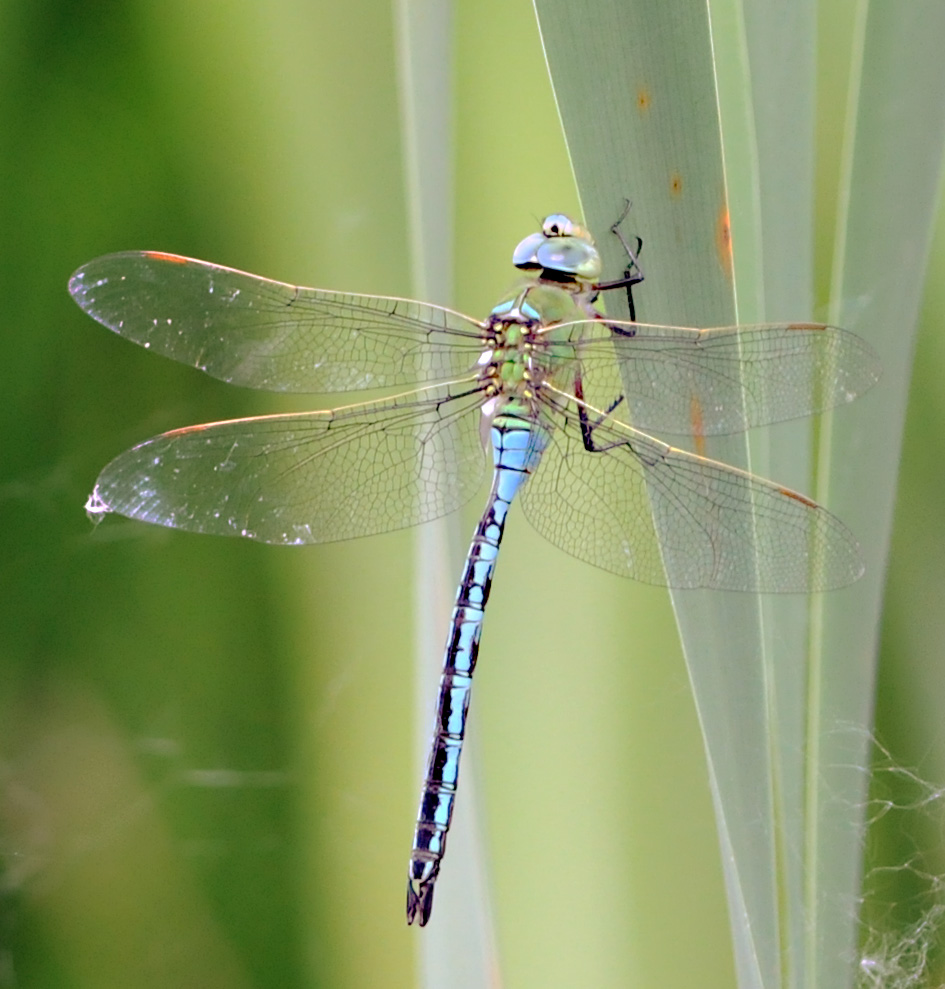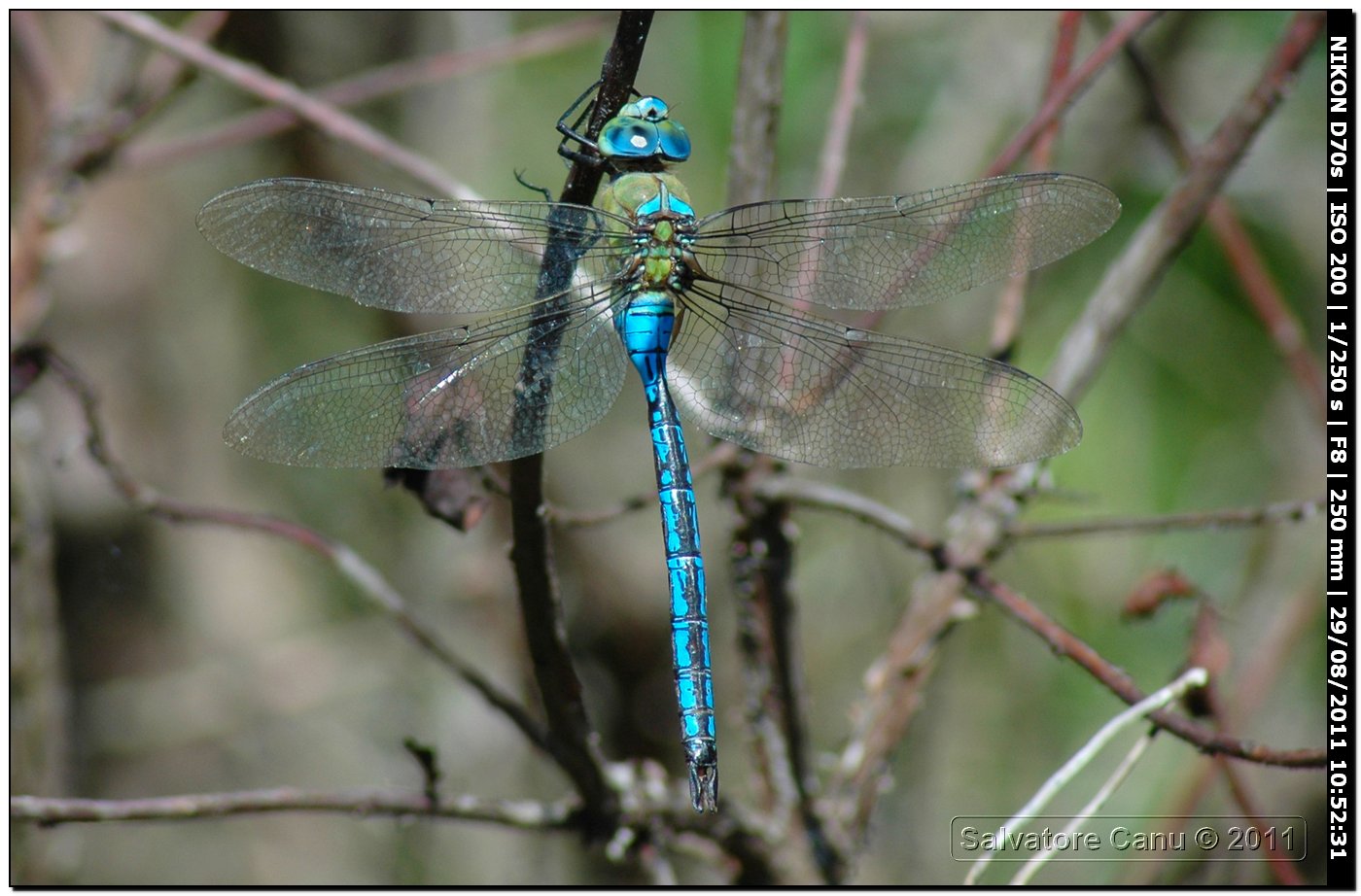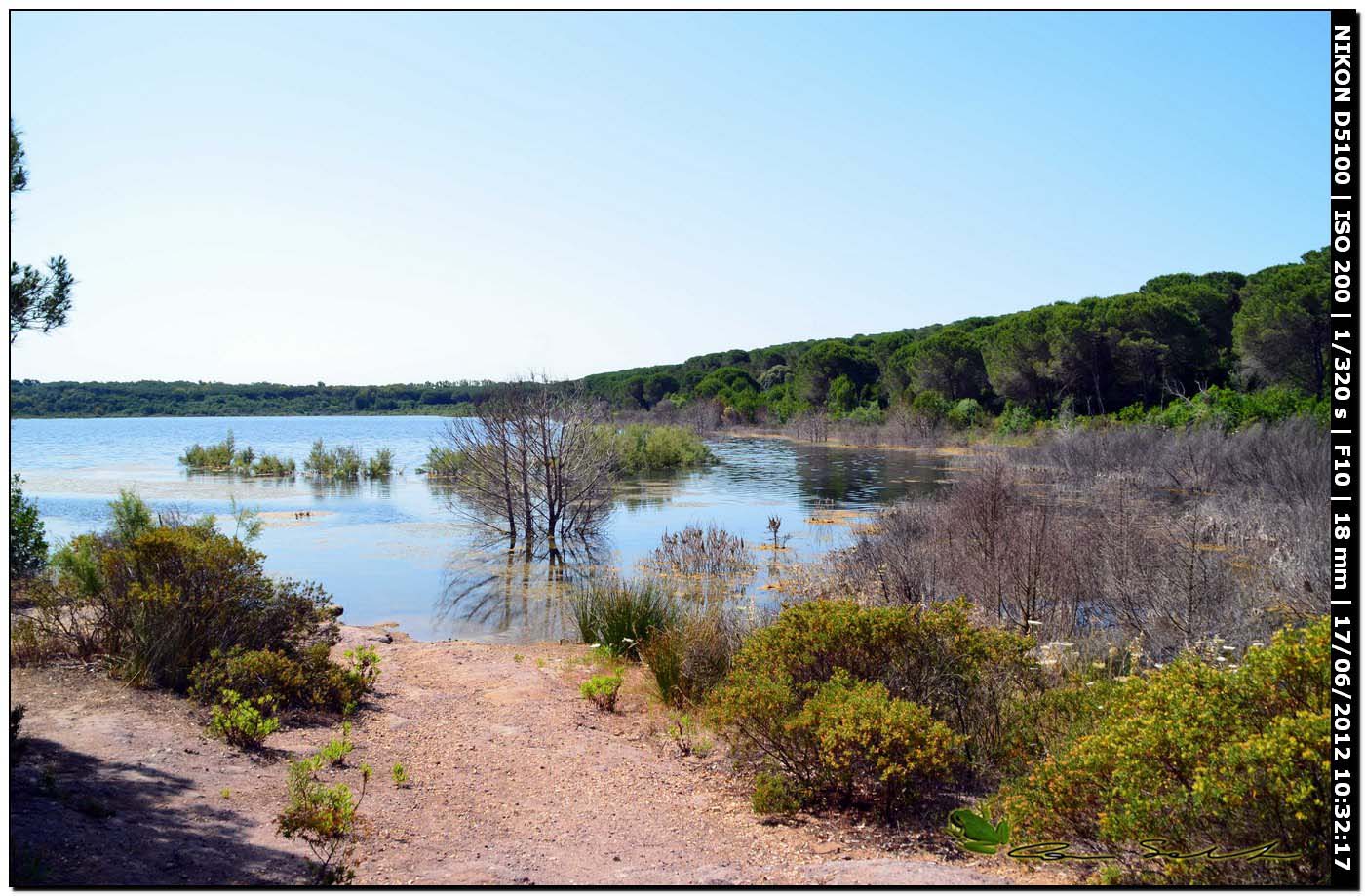Königslibelle
© Gianpiero Secco & Salvatore Canu, Luigi Lenzini (Foto) & Clemens M. Brandstetter (Text)
 (from Boudot & al. 2009:104): it is common and widespread in Europe, western Asia and parts of Africa.
(from Boudot & al. 2009:104): it is common and widespread in Europe, western Asia and parts of Africa.
 Società italiana per lo studio e la conservazione delle libellule.
Società italiana per lo studio e la conservazione delle libellule.
Die Libelle gehört der Grösse nach in die "Köngisklasse". Mit lateinischem Namen heisst die Grosse Königslibelle Anax imperator und wurde von Leach 1815 beschrieben. Die Tiere sind äusserst gute Flieger, die oft weit weg der stehenden Gewässer – ihrem Lebensraum – anzutreffen sind. Das Männchen beginnt die Paarung im Flug, das Weibchen legt nach der Paarung die Eier unterhalb der Wasserlinie ab; dabei bohrt das Tier Pflanzenteile an und legt dort die Eier ab. Thorax und Abdomen sind grün und blau gefärbt; das Abdomen hat eine schwarze Zeichnung. Sie unterscheidet sich dadurch von der Kleinen Königslibelle. Die Art kommt von den Kanaren über Nordafrika, das südliche Europa, den Nahen Osten, Arabien (Feulner & al. 2007) bis Westasien vor. Nach Schröter (2010) ist die östlichste Verbreitungsgrenze Kirgisistan bis maximal 1.500 Meter Höhe..

Männchen der Königslibelle (Piemont, Centro Cicogne, Racconigi, Prov. Cuneo- Foto: Gianpiero Secco).

Und hier der "König" aus Sardinien: Lago di Baratz, Prov. Sassari (Foto: Salvatore Canu).
Die "Königin" bei der Eiablage (Porto Pozzo (Santa Teresa Gallura), Prov. Olbia Tempo, Sardinien).

Lago di Baratz, Prov. Sassari, Sardinien – Foto: Salvatore Canu.
Weiterführende Literatur:
Boudot J.-P., V. J. Kalkman, M. Amorín, T. Bogdanović, A. Rivera,G. Degabriele, J.L. Dommanget, S. Ferreira, B. Garrigós, M. Jović, M. Kotarac, W. Lopau, M. Marinov, N. Mihoković, E. Riservato, B. Samraoui & W. Schneider 2009: Atlas of the Odonata of the Mediterranean and North Africa. – Libellula Supplement 9:1-256.
Corso, A., Janni, O., Pavesi, M., Sammut, M., Sciberras, A. & Vigano, M. 2012: Annotated checklist of the dragonflies (Insecta Odonata) of the islands of the Sicilian Channel, including the first records of Sympetrum sinaiticum Dumont, 1977 and Pantala flavescens (Fabricius, 1798) for Italy. – Biodiversity Journal, 2012, 3 (4): 459-478.
Feulner G.R., Reimer R.W. & Hornby R.J. 2007: An Updated illustrated Checklist of the Damselflies & Dragonflies of the UAE. Tribulus, Volume 17: 37 – 62.
Leach W. E. 1815: The Zoological Miscellany; being descriptions of new, or interesting animals. – London, Nodder & Son 8vo 3 volumes + atlas: 149 pls.
Schröter A. 2010: The Odonata of Kyrgyzstan, part I – Critical national checklist, annotated list of records and collected data of the summer half-years 2008 and 2009. – International Dragonfly Fund – Report 28 (2010): 1-72.
¨
